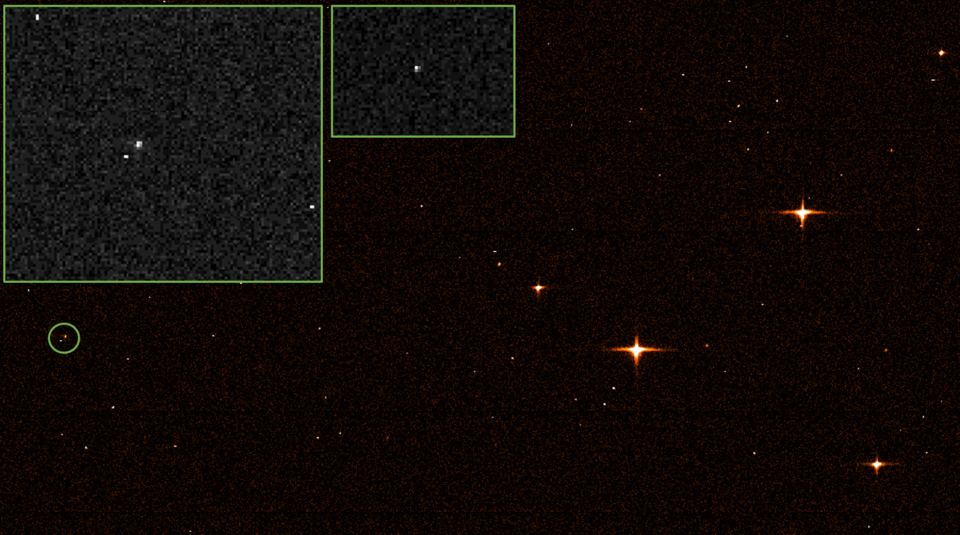Oh, hello there new neighbor! In February, the Gaia spacecraft took a picture of its new closest companion in space at the second Lagrangian point, the James Webb Space Telescope.
Gaia is an optical telescope that is mapping out our galaxy by surveying the motions of more than a thousand million stars. Astronomers for the mission realized that once JWST reached L2, it would be in Gaia’s field of view. It spied JWST when the two spacecraft were a million km apart.

Both spacecraft are located in orbits around the Lagrange point 2 (L2), 1.5 million km from Earth in the direction away from the Sun. Gaia has been there since 2014, and Webb arrived in January 2022. The two spacecraft aren’t quite in the same orbit, though. Gaia orbits L2 in a Lissajous orbit — a kind of boxy-shaped orbit — while JWST orbits L2 in a halo orbit, which has a more oval shape to the path it takes. L2 is not a fixed point in space, but follows the Earth around the Sun, always opposite from the Sun.
A few weeks before Webb’s arrival at L2, Gaia astronomers Uli Bastian of Heidelberg University (Germany) and Francois Mignard of Nice Observatory (France) realized that during Gaia’s continuous scanning of the entire sky, its new neighbor should occasionally cross Gaia’s fields of view.
They determined the first time they’d have the possibility of taking a picture of JWST would be February 18, 2022.
JWST appears as a tiny speck of light, as astronomers said that very little reflected sunlight came Gaia’s way from the new telescope.

Additionally, Gaia is not really designed to take real pictures of celestial objects. Instead, it collects very precise measurements of their positions, motions, distances, and colors. But one of the instruments uses a type of finder scope as its sky mapper, and that’s the instrument that took the picture of Webb.
Every six hours, Gaia’s sky mapper scans a narrow 360-degree strip around the entire celestial sphere. The successive strips are slightly tilted with respect to each other, so that every few months the entire sky is covered, with Gaia gathering data on everything that’s bright enough to be seen by the spacecraft’s instruments.
ESA said the sky mapper instrument was originally planned for technical servicing and engineering purposes, but during the eight-year mission they’ve also found some scientific uses for it. They decided, why not use it for a snapshot of Webb?
After the sky mapper took the picture, and the raw data was sent back to Earth, it took a few days for astronomers to find and then verify the small dot in one photo was indeed JWST.
ESA said Francois Mignard sent an email to all people involved, with an enthusiastic subject line: “JWST: Got it!!”
Maybe every spacecraft should have a buddy to keep tabs on, out there in the great beyond.

